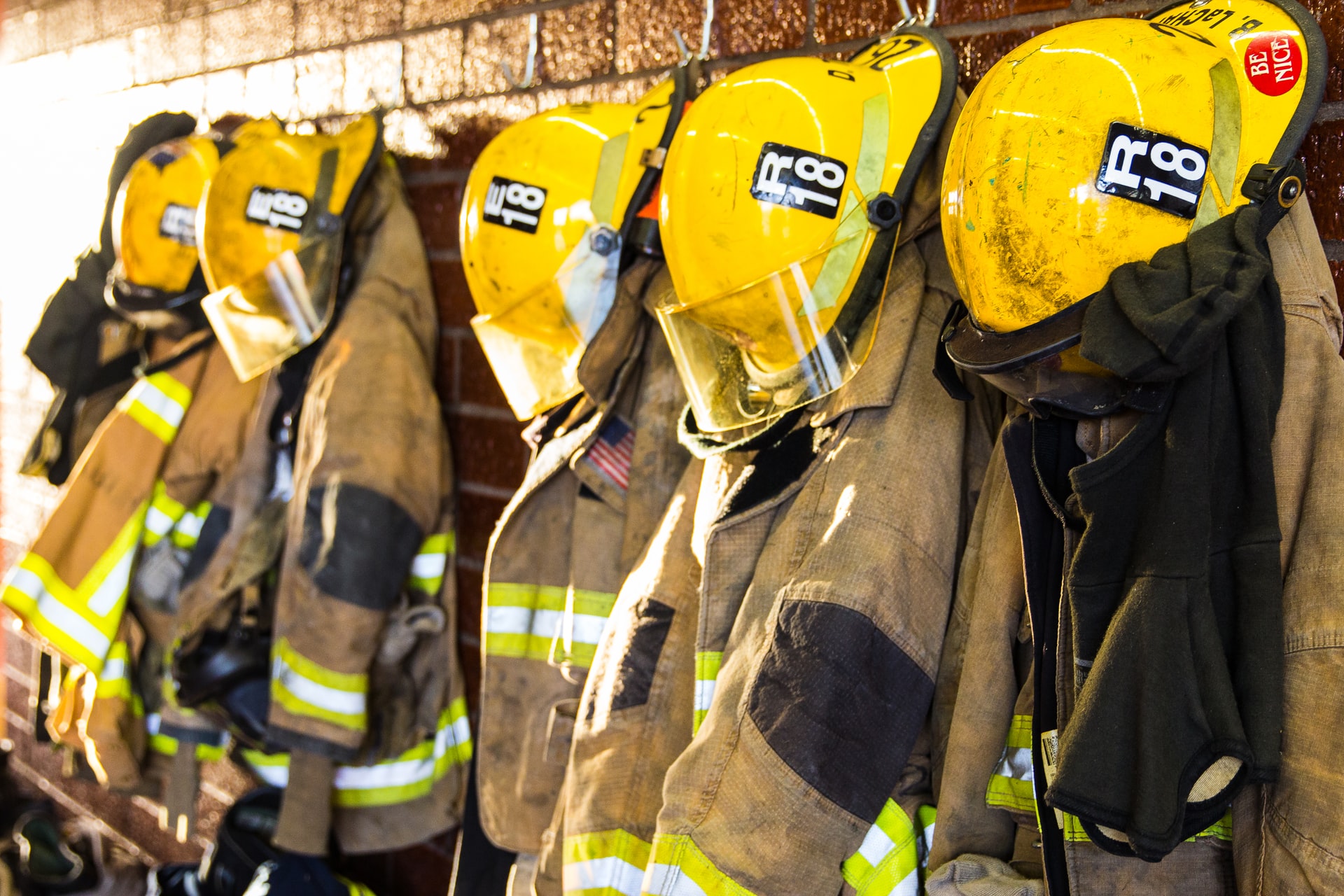Fire safety is something we have drilled (no pun intended) into us from a young age. From when we’re in school to the moment we retire, we’re taught about fire safety procedures in every place we work or study, and we’re provided with the necessary means to prevent and respond to fires. But when it comes to the materials we use to take these steps, we might not often think of large format print installations.
In truth, when it comes to public spaces and events, print solutions need to meet a number of criteria depending on how and where they’ll be used. In this article, we’ll take a look at what these are, and the various print solutions that can be used to meet these stipulations whilst still ensuring a top quality project.
What is fire-retardant large format printing?
Large format printing employs materials including vinyl, fabric, and even metals. It can utilise solvent and/or water-based inks, in a number of different configurations and varieties, and the possibilities and potentials of large format campaigns are vast and ever expanding as new technology emerges.
Among these options are fire-retardant print solutions, which use a combination of fire resistant materials (such as vinyl, as opposed to polyethylene) to ensure protection against flames, rather than going up in a literal puff of smoke. These can still feature the same quality of graphic print as any other form of vinyl, with the added benefit of providing protection in the event of a fire.
Fire-retardant large format print solutions, such as hoarding panels, usually come with a time rating, which indicates how long they will be able to withstand the effects of a fire – this is normally broken down into hours.
It’s worth noting that there is a difference between materials which are naturally resistant to burning, and specific fire-retardant products. Something like a vinyl banner, for instance, won’t burn readily – but if there is an impetus for a high-safety, fire-resistant installation, a specific product may be required.
Fire regulations for situations involving printed graphics
There aren’t always specific legal guidelines with regard to individual print solutions themselves, but there are clear regulations in place for the situations in which these installations would be used.
For example, in the UK, The Regulatory Reform (Fire Safety) Order 2005 came into force in October 2006, and sets out very clear guidelines as to establishing protection against fires. The main factor in this is that rather than be issued fire safety certificates, buildings managers’ became responsible for producing their own fire risk assessments, demonstrating the risks of fire and precautions taken against them.
This was mainly to allow for developments in fire awareness and risk protection. Before, there was no reason to update or change anything on the premises between certificate assessments, and this didn’t encourage the use of safer materials when they became available (or the removal of unsafe materials, should they become identified). Now, when new risks are present in a public space, it is the duty of those responsible for the space to ensure they are factored into the risk assessment.
The Building Regulations For Wall Coverings
The is the important bit when it comes to actually getting something printed. When you decide to order a series of large printed graphics, that are intended to cover part of a wall (whether that’s a permanent surface or something like a temporary hoarding), the materials used in the product need to meet very specific guidelines. Unfortunately, this doesn’t always happen – usually because of confusion about which materials qualify.
In the EU, any material that is to be installed onto an internal wall is subject to what’s known as the ‘construction products regulation’, and they’re legally required to hold a ‘CE’ marking, and an EN 15102 certificate.
This doesn’t just involve fire rating, and this is a trap that some people fall into. A wall covering or adhesive print substrate may be ‘fire retardant’, but that doesn’t necessarily mean it meet the specifications required for a full EN 15102 certificate. Fire rating is only one part of this – other categories include the use of Heavy Metals, the release of formaldehyde, the release of Vinyl Chloride Monomer, and thermal resistance.
If a product doesn’t meet all of these, it doesn’t get a certificate – and even if it is ‘fireproof’, it doesn’t meet the building regulations for use on an internal surface in a public building.
What should I ask my print supplier?
A good print supplier will know the situations when a product is required to meet fire rating regulations. The key thing you should ask for is which substrates, materials, or products they can offer you that meet these guidelines.
You should also consider if this will have any kind of visual impact on your designs – the very best suppliers will take this into account, and be able to run you through the options that are available to you while considering how to ensure your finished project looks stunning, and doesn’t compromise on visual quality.
Which situations require fire-resistant printing?
Unsurprisingly, the situations which require fire-resistant printing predominantly include those in which members of the public will be in proximity to the graphics. Similarly, they are necessary in situations when the risk of fire is either heightened, or the effects of a fire could cause more significant harm.
These include, but are not limited to:
- Construction sites – particularly the hoardings for those situated indoors, in public areas
- Events – such as festivals, concerts, or conventions
- Construction sites – particularly for indoor construction areas
- Areas of high pedestrian traffic – such as shopping centres or retail parks
The important thing to note is that the wrong print installation in the wrong place could potentially present a fire hazard, and there are situations – such as the one above – when it is mandatory to ensure fire-retardant large format products are used.
Different types of fire-retardant printing
When it comes to graphics for scenarios where fire safety is a priority – such as banners or adverts in retail spaces or shopping malls (retail fires account for roughly 10% of all ‘large loss fires’. Of those, around 2% are in shopping centres!), or hoarding graphics for internal use, there are a wide range of materials available.
From vinyl to fabric, there is a vast array of options, but what’s particularly reassuring to note is that there are fire-retardant substrates (the material printed onto) for basically every situation. Even for installations such as tension fabric frames – which utilise fabrics as a substrate rather than PVC vinyl – fire-retardant options are available.
This means marketers won’t need to compromise when they’re determining what graphics or solutions to opt for, but it does mean they’ll need to consider this when choosing a print supplier…
Choosing the right print supplier for fire-retardant large format printing
When consulting with a print supplier at the early stages of a project, it’s vital to consider fire-retardancy and any potential implications this might have on the materials you’ll need to choose. Importantly, if you think this will be an important consideration in your project, it’s almost always best to choose a supplier with plenty of experience.
The more options a print specialist can offer you, and the more experienced they are in providing graphics for specific scenarios, the better suited to your project they’ll be. It’s normally perfectly fine to defer to their knowledge, but the best firms will also be flexible in their approach.
The most important thing is never to compromise on a supplier who isn’t suited to recommending or providing products for your specific project. Ultimately, this is a safety concern, and it’s never a good idea to settle for ‘good enough’ rather than ‘best suited’.


